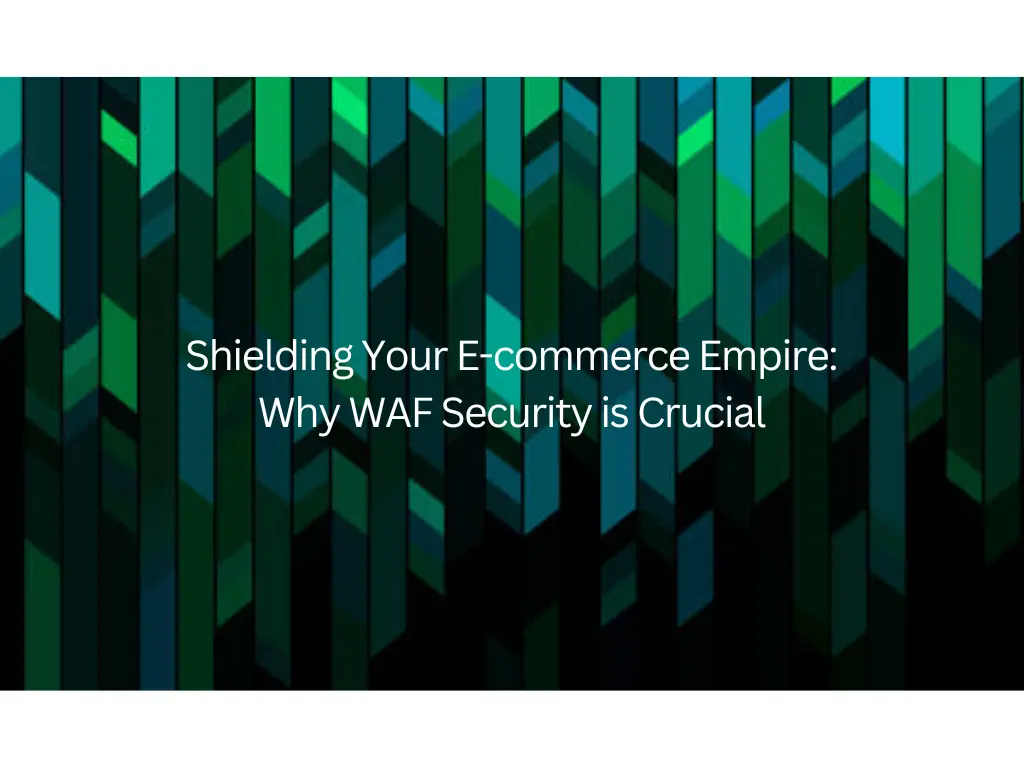WAF for E-commerce: Secure Your Online Store & Protect Customer Data
In the bustling digital marketplace, your e-commerce website is your storefront, your cash register, and your connection to customers worldwide. But just like a physical store needs robust security, your online presence requires a strong defense against the ever-evolving landscape of cyber threats. That’s where a Web Application Firewall (WAF) comes in, acting as a vigilant guardian for your valuable data and your hard-earned reputation. Think of it as the digital bouncer at your online door, carefully vetting every interaction and blocking any malicious attempts to infiltrate your system. This guide will explore the essential features of a WAF for e-commerce, including bot mitigation, PCI DSS compliance, and protection against SQL injection and XSS attacks, empowering you to secure your online transactions today.
Why is WAF Security So Important for E-commerce?
E-commerce businesses are treasure troves of sensitive information. We’re talking about customer names, addresses, credit card details, purchase histories – the kind of data that hackers dream of getting their hands on. A successful attack can lead to devastating consequences:
- Data Breaches: Theft of customer data can lead to hefty fines, legal battles, and irreparable damage to your brand trust. Nobody wants to shop at a store that’s known for losing customer information.
- Financial Losses: Beyond fines, a breach can lead to direct financial losses from stolen funds, disrupted operations, and the cost of recovery.
- Reputational Damage: Trust is the cornerstone of any successful e-commerce business. A security breach can shatter that trust, driving customers away and making it difficult to win them back.
- Downtime: Attacks can cripple your website, preventing customers from accessing your products and services. This translates directly to lost sales and frustrated customers.
A WAF for e-commerce acts as the first line of defense against these threats, proactively identifying and blocking malicious traffic including sophisticated bot attacks before it can reach your web application.
Types of Web Application Firewalls: Choosing the Right Fit
Just like there are different types of security systems for physical stores, there are different types of WAFs to suit various needs:
- Cloud-based WAFs: These are hosted in the cloud and offer a quick and easy way to get started. They’re often preferred for their scalability and ease of management. Think of it as hiring a security company to patrol your online storefront.
- On-premise WAFs: Deployed on your own servers, these offer greater control and customization. They’re like having your own dedicated security team on-site.
- Hybrid WAFs: A combination of cloud and on-premise solutions, offering the best of both worlds. This is like having a combination of on-site guards and a remote security monitoring center.
The best choice for your business depends on factors like your budget, technical expertise, and specific security requirements.
WAF Features and Capabilities: What Does it Do?
A WAF is more than just a firewall; it’s a sophisticated security solution with a range of powerful features crucial for e-commerce security:
- Protection against common web attacks: It shields your website from attacks like SQL injection, cross-site scripting (XSS), and cross-site request forgery (CSRF), which are common tactics used by hackers targeting online stores.
- Bot mitigation: This is a critical feature for e-commerce. Malicious bots can wreak havoc on e-commerce sites, scraping product data for competitors, performing brute-force attacks to guess passwords, creating fake accounts, manipulating reviews, and disrupting performance by overloading servers. A WAF can identify and block these bots using various techniques, including rate limiting, CAPTCHAs, and behavioral analysis, ensuring your site remains available for legitimate customers and your data remains protected.
- Rate limiting: This feature helps prevent overwhelming your servers with excessive requests, ensuring your website remains responsive even under heavy traffic or attack, including bot-driven attacks.
- Customizable rules: You can configure the WAF’s rules to match your specific application requirements and security policies, tailoring it to your e-commerce platform. This allows you to fine-tune bot protection strategies as well.
- Real-time monitoring and reporting: A WAF provides insights into your website’s traffic and security posture, allowing you to identify and respond to threats quickly. This is vital for staying ahead of potential attacks, including bot activity.
- PCI DSS Compliance: For e-commerce businesses handling credit card information, PCI DSS compliance is essential. A WAF can assist in meeting these requirements by protecting cardholder data.
WAF Technology: How Does it Work?
WAFs typically use a combination of techniques to protect your web application:
- Signature-based detection: This involves comparing incoming requests to a database of known attack patterns, including bot signatures.
- Anomaly-based detection: This identifies unusual traffic patterns that may indicate an attack, including unusual bot behavior.
- Behavioral analysis: This monitors the behavior of users and applications to detect suspicious activity, helping to identify sophisticated bots that mimic human behavior.
Supercharging Your WAF with HALTDOS
For an even stronger layer of protection, especially against disruptions, consider integrating your WAF with a solution like HALTDOS. HALTDOS specializes in defending against Distributed Denial of Service (DDoS) attacks, which can flood your website with traffic and bring it down, crippling your e-commerce operations. DDoS attacks are often bot-driven. Combining a WAF with HALTDOS creates a comprehensive security shield, protecting your e-commerce business from both application-level attacks and network-level disruptions, including those driven by bots.
Protecting Your Digital Storefront
In today’s digital world, a WAF for e-commerce is no longer a luxury – it’s a necessity. By investing in a robust WAF solution, especially one with strong bot mitigation capabilities, you’re not just protecting your data; you’re protecting your reputation, your revenue, and your future. It’s an investment in peace of mind, allowing you to focus on what you do best: growing your e-commerce empire. Secure your online transactions today with the right WAF.




